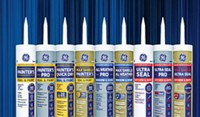Advertisement
Grab your lab coat. Let's get started
Welcome!
Welcome!
Create an account below to get 6 C&EN articles per month, receive newsletters and more - all free.
It seems this is your first time logging in online. Please enter the following information to continue.
As an ACS member you automatically get access to this site. All we need is few more details to create your reading experience.
Not you? Sign in with a different account.
Not you? Sign in with a different account.
ERROR 1
ERROR 1
ERROR 2
ERROR 2
ERROR 2
ERROR 2
ERROR 2
Password and Confirm password must match.
If you have an ACS member number, please enter it here so we can link this account to your membership. (optional)
ERROR 2
ACS values your privacy. By submitting your information, you are gaining access to C&EN and subscribing to our weekly newsletter. We use the information you provide to make your reading experience better, and we will never sell your data to third party members.
Business
Full Speed Ahead
CEO Stephanie Burns guides Dow Corning toward innovation and global expansion
by MARC S. REISCH, C&EN NORTHEAST NEWS BUREAU
September 27, 2004
| A version of this story appeared in
Volume 82, Issue 39

"We know where we want to go," says Stephanie A. Burns, 49, Dow Corning's president and chief executive officer. The firm has set its sights on geographic expansions into China, India, Russia, and Turkey. It sees promising opportunities for its materials in photovoltaics, photonics, and electronics. And it is looking ahead to a time when it can harness enzymes to transform silicon into useful new compounds.
Nine years in bankruptcy reorganization gave Dow Corning--a 50-50 joint venture between Dow Chemical and glassmaker Corning--more reason than most companies have to think hard about where it wanted to go. Though a bankruptcy judge finally signed off on a settlement--a $4.2 billion payout to silicone gel breast implant recipients and creditors--in June, Burns says the company had been planning its current expansion strategy since 2000.
Gary E. Anderson, 59, who retired in early July as chairman and remains as part-time nonexecutive chairman, worked with Burns and other Dow Corning executives to plan the firm's aggressive strategy. "We haven't changed our plans since Anderson retired," Burns says. But it is on her watch that Dow Corning will execute the plan to innovate and expand geographically.
"From the perspective of employee morale, it's good to no longer be under court supervision," Burns comments. But even in its darkest hours, when top executives seemed to be preoccupied with legal issues, Dow Corning managers never lost control over their business, Burns points out. "We were in Chapter 11 not because of financial issues, but because of tort liability," she explains. "We only needed approval from the court for big projects."
While under court supervision, Dow Corning undertook multi-million-dollar capacity expansions in polydimethyl siloxanes--the basic materials for silicone fluid, gels, elastomers, and resins--in Barry, U.K. In June 2003, it bought one of the largest U.S. silicon metal makers, Simcala, to improve its cost position. In January 2003, it purchased Sterling Semiconductor to service electronics customers with silicon carbide.
Most of all, Burns says, the reorganization experience has made Dow Corning more attentive to the products it introduces and the markets those products serve. It wants to avoid, as best as it can, the type of product liability issues that dogged its every step over the past decade, she notes. It has, for instance, foregone the sale of its products for use in long-term implantable medical products to avoid being the subject of public outrage.
"The legal system in the U.S. doesn't always take sound science into consideration," Burns says. "We'd love to see the political and legal system rely more on peer-reviewed science to answer complex questions."
WHEN BURNS discusses the difficult interface of science and the legal system, she knows what she is talking about. From 1994 to 1997, she was Dow Corning's director of women's health issues. She was also a member of the company's bankruptcy management team when it filed for reorganization in 1995.
A Ph.D. organic chemist from Iowa State University with a specialty in organosilicons, Burns started at Dow Corning in 1983 as a researcher working on water-based and high-temperature elastomers. With such a background, she is in a good position to appreciate not only the benefit of research advances in silicon, but also the cultural and business difficulties that products of research can encounter.
And still she is optimistic. "We have a lot of exciting opportunities for growth," Burns says. Worldwide demand for silicon-based products has been strong in all segments of the firm's business, including paper, construction, and personal care products. Sales for 2003 were nearly $2.9 billion, about 10% higher than the year earlier. Net income of $177 million, excluding unusual charges, exceeded 2002 results by 25%. So far, 2004 results have been even stronger. For the first half of the year, net income of $132 million was 47% higher than in the corresponding 2003 period, while sales rose 22% to $1.37 billion.
But some of the profit growth has come at the expense of jobs. Between 2000 and 2004, the firm has cut almost 1,700 positions. This year alone, it is cutting 250 jobs. When the restructuring costs and other charges are factored in, Dow Corning's net income in the first half of 2004 is $88 million--slightly less than what it earned in the comparable 2003 period.
The cuts are part of a reorganization plan that aims to reduce costs by 20% between 2002 and 2005 by "streamlining" traditional businesses, and so improving financial performance, Burns says. Another cost-reduction effort has been to sell most silicone commodities--about 30% of the firm's sales--via the Internet. However, Dow Corning isn't so much slimming down as it is redeploying its forces. The firm will be adding personnel through growth in target areas, through geographic expansions, and through acquisitions, Burns says.
Also slicing into profits are high energy costs. Suppliers are raising prices for natural-gas-based methyl chloride and methanol, which Dow Corning purchases to react with silicon metal to make silicon-based materials. In addition, Dow Corning is feeling the pinch from increased costs for energy used in its manufacturing processes. "We are the second largest user of electricity in the state of Michigan," Burns says, adding that "we are working hard to keep up with pricing to recover our increased costs."
Demand for basic silicone products is strong globally, Burns says, and this is the reason Dow Corning said last month that it would increase polydimethyl siloxane production once again in Barry, this time by 15%. The firm has built inventory so that it will be able to supply derivative products to customers during a brief shutdown to end in October. The installation of new equipment will allow Dow Corning not only to increase production, but also to comply with environmental regulations.
Though the firm doesn't reveal capital expenditures, it is planning some hefty investments. Another expansion is slated at Barry in 2006. Then, sometime before 2010, Dow Corning and longtime silicone rival Wacker Chemie plan to build a silicone intermediates and fumed silica manufacturing joint venture in China. It will cost "hundreds of millions," Burns says. Both firms will independently manufacture and sell finished materials from the site.
Dow Corning also has its eye on India. The firm recently purchased land in that country where it ultimately plans to construct another finished materials plant. Turkey and Russia are the focus of increased sales and technical assistance efforts, Burns adds. More than half of the company's sales are now outside the U.S., and, with its increased focus on global markets, sales to international customers are likely to increase.

But it is through innovation that Dow Corning expects to gain the biggest bang for its buck. With 6% of sales devoted to R&D, Burns says such spending is key. "It differentiates us from the competition," which includes Wacker, General Electric, and Japan's Shin-Etsu Chemical.
THE FIRM recently renewed an alliance, originally formed in 2001, to combine Genencor International's enzymes expertise with its own understanding of silicones to create unique new materials. So far, says Burns, "we've made some interesting materials, but nothing is commercial yet. We really didn't expect to get anything commercial so soon. But we will have a strong patent portfolio from this venture." Kurt F. Brandstadt, a Dow Corning researcher working with Genencor scientists, says the partners have been able to isolate a protease enzyme that catalyzes a siloxane reaction. "It's slow and clunky compared with carbon. But it gives us some basis to say that biotechnology may be able to change how we do things." Brandstadt suggests that enzymes could allow processing of silicones under mild temperature conditions, without solvents, and with little unwanted by-product. Enzymes might be used to link sugar molecules with silicones to create a new generation of water-soluble surfactants, for instance.
At the heart of the partners' research is the study of diatoms--marine organisms that make "wonderful stuff" out of salicic acid, Brandstadt says. These microscopic single-cell organisms use salicic acid dissolved in water to create intricate skeletons of great complexity. The study of how they do that has so far "provided great inspiration but no revenues," he acknowledges.
Still, Dow Corning and Genencor have high hopes for the alliance. They are working on the development of systems for the delivery of active ingredients. And in late 2002, the partners took on a project with Australia-based biosensors expert Ambri to develop methods for detecting biological and chemical weapons. They hope to win funding from the U.S. military and other sources.
While the research project with Genencor advances, Gregg Zank, Dow Corning's chief technology officer, is overseeing efforts to introduce silicon-based materials into photonic devices. "Silicone is a polymeric glass. It interacts with light a lot like glass," Zank says. Dow Corning is leveraging this property to develop silicone waveguides useful in optoelectronics for communication or information storage.
And Dow Corning is promoting the latest generation of silicon carbide wafer technology, Zank says, helped by the purchase of Sterling Semiconductor. Dow Corning already manufactures polycrystalline silicon for computer chips in its Hemlock Semiconductor joint venture with Shin-Etsu and Mitsubishi Materials. But silicon carbide has a distinct advantage. It carries current much more efficiently than pure silicon. It can operate at much higher temperatures and can also withstand higher voltages, according to executives.
Those properties also make silicon carbide a likely candidate for use in the manufacture of solar cells, a now $7 billion-per-year market growing at double-digit rates, according to Dow Corning executives. If it can be produced at the right price point, silicon carbide could make for more efficient solar cells, suggests Burns, who sees photovoltaics as one area ripe for silicon-based innovation.
Burns says Dow Corning knows where it wants to go with its traditional silicone business and its advanced silicon-based investments. The firm has a plan and is willing to invest the time and the money to finance that plan. It will use all the research tools at its disposal and will go to the farthest corners of Earth to grow its business, she says, now free from the limits of a court-imposed supervision.




Join the conversation
Contact the reporter
Submit a Letter to the Editor for publication
Engage with us on Twitter